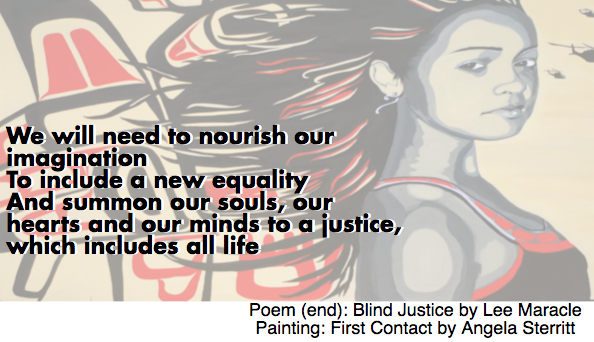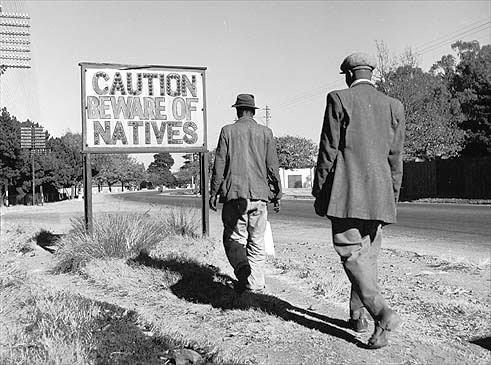“Until the bear speaks only the narrative of the hunter will be known.” [Wab Kinew]
Although I intended to just address criminalization due to the Indian Act, I further explored the intersecting ways that Indigenous peoples and communities experience colonial oppression. So to share actions for change, I feel my best choice is to amplify the voices of Indigenous peoples. As a society of Indigenous peoples, Treaty people and settlers, and as professionals with eminent power in Indigenous peoples lives and livelihoods, it is up to us to take real action.
I say this to myself as much as anyone. I know my own tendencies to fear being wrong or worse – disliked, or to having my privilege shine too bright, have influenced my choices to sit back, read and then rant in anger. But by having those fears the depth of my privilege is proven. So instead of continuing to wallow in my own fears, much like I did those moments of silence in high school, I have been working to take a socially just approach in life and to act against injustice. The words I share below are some inspirations that push me to do so.
In a speech on truth and reconciliation – Wab Kinew (from the Ojibways of Onigaming First Nation) – shared some insightful knowledge:
-
The truth makes you stronger if you embrace it and act on it.
-
There are two crucial parts to working with Indigenous peoples: (1) ground people to community, identity, place and (2) free people to be the fullest expression of self — be grounding & inspiring. Never forget that community needs should drive your interventions.
-
Reconciliation is up to each and every one of us to do something tangible — build bridges & learn. Walk the walk, talk about it, be about it. A fully formed human greets dysfunction with love, kindness and respect.
-
Listen before you talk. Learn to be meaningfully engaged in society. Smart people are everywhere and we need people to be allies to work together.
-
Understand the United Nations Declaration for Indigenous Peoples.
Wab expressed the need to turn words into actions. In his forward for Unsettling the Settler Within, Mohawk educator Taiaiake Alfred makes that statement clearly (2010, x):
Words must be accompanied by concrete action at all levels of Canadian society. If such actions are to be transformative, they cannot be predicated on good intentions but must be rooted instead in a fundamental recognition of the human dignity and right to freedom of self-determining Indigenous peoples.
Apply this to the social worker’s role. Working with people in vulnerable states and the intimacies of life, this call to action should resonate deeply and be accepted with respect and humility. Educator Paulette Regan provides powerful reflexive writing to help guide non-Indigenous settlers in support of Taiaiake’s claim. In her own efforts to decolonize her mind and actions, to embrace responsibility, and to work in solidarity with Indigenous peoples and Nations, Paulette explains (2010, p.18):
[my] own deepest learning has always come when I was in unfamiliar territory culturally, intellectually, and emotionally…this space of not knowing has power that may hold a key to decolonization for settlers…Sometimes we are offered a gift we are reluctant to accept. Perhaps we do not recognize it as a gift because it feels like a burden, like a heavy responsibility that we don’t quite know how to carry, and we are afraid that we will do so poorly.
That is powerful! Paulette reflects on the importance of learning in a holistic way – akin to Indigenous worldview – that doesn’t separate mind, body and spirit. She also discusses the impact of responsibility, but expresses it as a gift. Think of your ability to practice social work and create change as a gift – how does that alter your approach?
In solidarity – we share the gift to challenge colonial structures and to act toward reconciliation. To be a social worker, it is crucial that whatever sector we practice in we understand colonization and intergenerational effects. Furthermore, we must learn to work with and alongside Indigenous peoples by helping to create culturally safe environments.

Yours in solidarity. Miigwech.
Mallory Hilkewich









